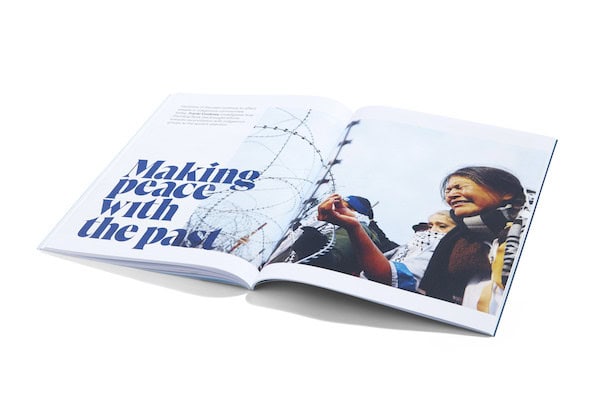Injustices of the past continue to affect people in indigenous communities today. Franki Cookney investigates how Standing Rock has brought efforts towards reconciliation with indigenous groups to the world’s attention
Beds and food were running scarce, a blizzard was approaching and the wind chill factor was minus 40 as thousands of US veterans travelled to the Standing Rock Sioux reservation in South Dakota in December last year. They were answering a call to protect their fellow Americans, and ended up taking part in a reconciliation ceremony in which they apologised for a long history of US violence against indigenous people.
Their plan was to give respite to the Native Americans protesting against plans for the Dakota Access pipeline, and to shield indigenous activists from attacks by a militarised police force. Conditions at the camp were becoming more and more difficult when the news came that the pipeline – which protesters say would contaminate their water supply and threaten sacred land – had been halted. With president-elect Trump a month away from being inaugurated, protesters suspected the triumph could be short-lived. Nevertheless, thousands of people were arriving to stand in solidarity. It seemed both a positive moment for the campaign and something of a landmark for indigenous relations across the US.
On 5 December, 2016, the veterans and their Sioux hosts came together in a ceremony of reconciliation. Led by Wes Clark Junior, former army lieutenant and son of general Wesley Clark, who was himself a former supreme allied commander of NATO, the veterans dropped to their knees, heads bowed, and asked the tribal elders for forgiveness. Clark candidly listed the wrongs inflicted on the Native Americans.
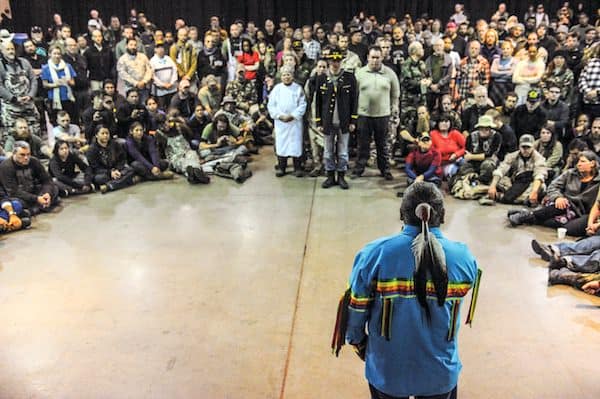
Veterans listen to Ivan Looking Horse during a healing ceremony at Standing Rock. Credit: Stephanie Keith/Reuters
“We didn’t respect you, we polluted your earth, we’ve hurt you in so many ways but we’ve come to say that we are sorry. We are at your service and we beg for your forgiveness,” he said. The ceremony was an ad hoc affair, recalls veteran Kevin Basl, but none the less poignant for it.
“The Sioux passed around eagle feathers and said we were now tied to the land and obligated to protect it,” he says.
Basl was a radar commander in the US army between 2003 and 2008, during which time he served two tours in Iraq. He is now a writer and member of the Iraq Veterans Against the War group. He went to Standing Rock because, after leaving the army, he felt very disillusioned about his time there. Having joined up to ‘do good’, he didn’t feel he had been able to. Of his time at Standing Rock he says: “There, instead of helping military contractors make money, I felt like I was finally serving the people.”
He says the ceremony was fairly spontaneous. “I heard about it through word of mouth on the camp. I didn’t know whether to believe it but we followed our instincts and went along anyway. I was exhausted, but the emotional weight and significance of the event kept me riveted. The Native Americans receiving the apology made rounds to hug every veteran.”
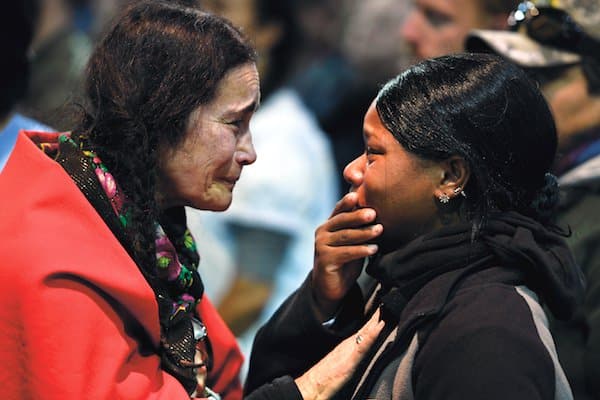
Maria Michael, a Lakota leader, embraces US army veteran Tatiana McLee. Credit: Helen H. Richardson/Getty Images
But was the ceremony a token gesture, or a real step forward for peace, forgiveness and reconciliation?
Writer and artist Pat McCabe is a Navajo, or Diné, activist from New Mexico, US. She believes the events at Standing Rock represent a moment of genuine progress. “The veterans’ apology brought up so much emotion. It was a clear example of stepping outside the usual way of seeing things,” she says.
“Alongside that, the way that [US TV host] Lawrence O’Donnell started to comment on Standing Rock in news reports was very moving. He discussed US history in a way that a Native person could relate to, describing the injustice and the violations. To hear that truth-telling taking place on national television was profound. It was something I never thought I would witness.”
Like the sound of people-powered media?
Michael Johnson, director of development at indigenous rights organisation Cultural Survival, based in Massachusetts, US, agrees that Standing Rock marked a change in attitudes about how reconciliation can be achieved.
“The forgiveness ceremony was very touching and powerful, but also much needed,” he says. Johnson comes himself from the Arikara and Hidatsa people, a Native American group whose traditional lands were in the Missouri River basin. He sees the solidarity across cultural and ethnic groups as a significant positive shift.
Attitude and behaviour change happen at a very real level when people connect
“The momentum and attention is staggering. There is a growing sense of shared values cross-cutting many different groups. It is powerful to see citizens actively move to engage Native nations.”
The power of forgiveness
Of course, forgiveness and truth-telling have long been a part of reconciliation efforts around the world. The Truth and Reconciliation Commission was established in South Africa following apartheid. It offered political criminals amnesty in return for a truthful account of their actions and an opportunity to ask for forgiveness. Victims of their crimes could hear the confessions, tell their own stories and have their suffering acknowledged. The commission’s former chair, archbishop Desmond Tutu, wrote: “Confession, forgiveness, and reconciliation are not nebulous and unrealistic. They are the stuff of practical politics.”
In 2010, Canada’s ‘charter of forgiveness’ was signed by Native elders and survivors of the country’s residential schools network. The network saw 150,000 First Nations, Métis and Inuit children forcibly placed in boarding schools where many suffered malnutrition as well as mental, physical and sexual abuse.
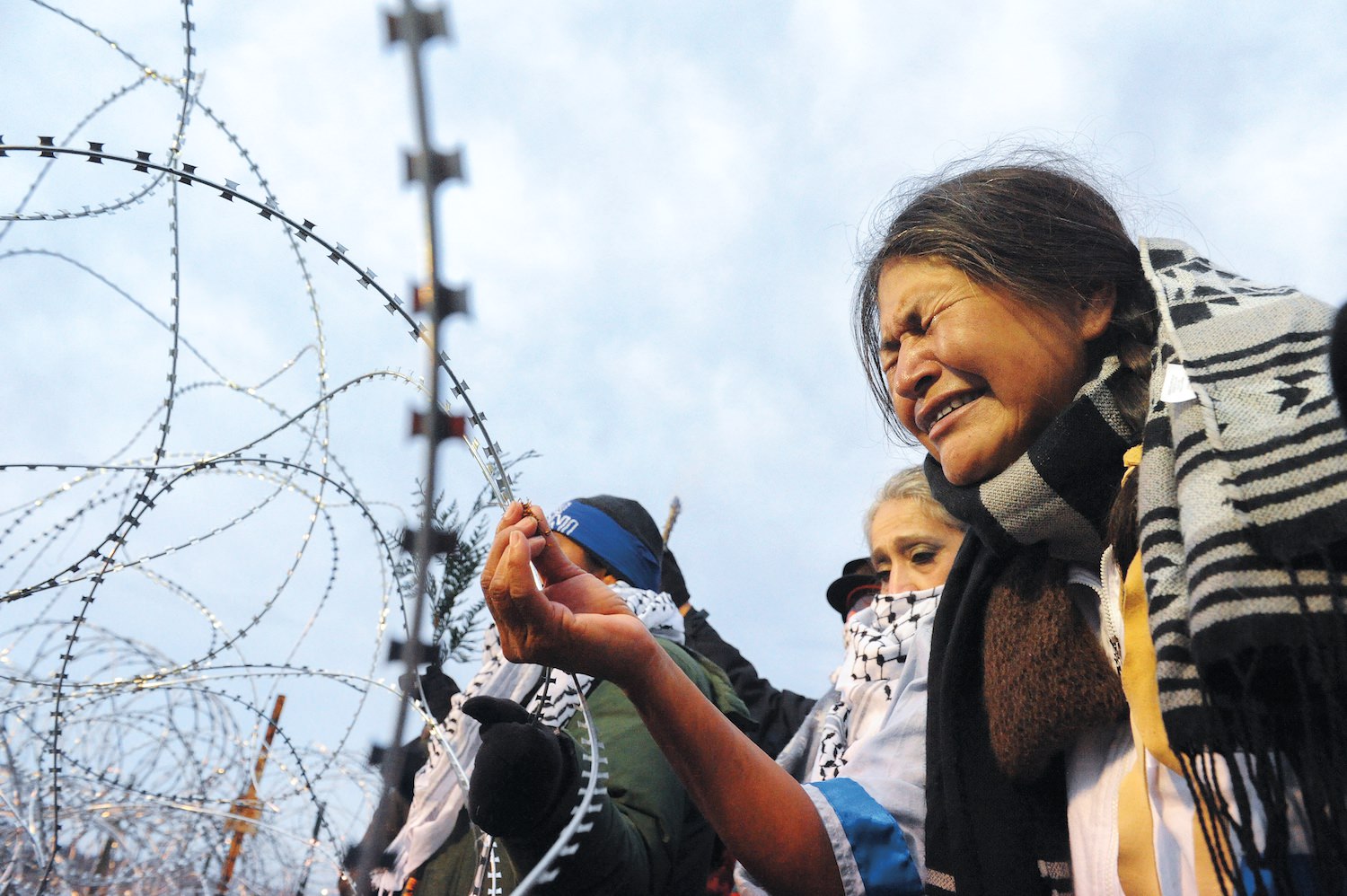
Cheryl Angel offers ceremonial tobacco on Backwater Bridge during a protest against plans to pass the Dakota Access pipeline near the Standing Rock Sioux reservation in December 2016. Credit: Stephanie Keith/Reuters
Canada’s own Truth and Reconciliation Commission has since investigated the atrocities, while charity Reconciliation Canada runs regular forgiveness and reconciliation events across the country.
“The government recognises that the absence of an apology has been an impediment to healing and reconciliation,” noted then-prime minister Stephen Harper in a speech in 2008. Such efforts are not always well received. In 2008, former Australian prime minister Kevin Rudd apologised to the country’s indigenous peoples. But this, and attempts to incorporate reconciliation events into Australia Day celebrations, have failed to convince Indigenous Australian communities. Thousands marched this year to protest the fact that Australia Day, 26 January, commemorates the arrival and establishment of the first British penal colony. Many rename it Invasion Day.
Authenticity is all
The problem, suggests Johnson, is when efforts are one-sided. “Just because colonial powers want or need reconciliation, doesn’t mean that Native nations see those attempts as genuine,” he says.
“The first thing to consider is the involvement of indigenous communities,” Johnson continues. “The truth has to be told. Testimony has to be gathered.”
Arguably, New Zealand has seen more success in addressing past injustices. There is dedicated indigenous representation in the country’s parliament, state-funded Maori language media, and numerous settlements have aimed to address land rights and make financial reparations.
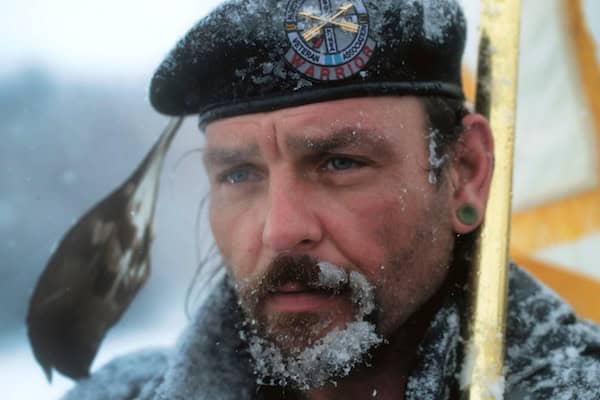
Martan Mendenhall, a US army veteran and Blackfoot Indian, marched in solidarity with Native American water protectors at Standing Rock. Credit: Scott Olson/Getty Images
For reconciliation to be successful, it seems it has to combine heartfelt remorse and constructive action; something Standing Rock’s ceremony seemed to achieve. Clashes at the site had grown increasingly violent by last autumn, with police using water cannons, rubber bullets and tear gas against protesters. The veterans’ offer of protection was real.
“I was prepared to go to jail,” says Basl. “I knew that serious injury, or even death, was not out of the question. The ceremony itself may have been symbolic, but the veterans came to put their bodies on the line, which represents a concrete act of sacrifice on the part of the oppressor.”
In January, President Trump signed an executive order to push on with the pipeline. Veterans returned to Standing Rock, pledging to form a human shield between protesters and police. McCabe says the veterans’ continued support demonstrates the sincerity of their apologies. “I really believe that what they were trying to do was from the heart,” she says. “You can’t underestimate the power of acknowledgement.”
The momentum and attention is staggering. It is powerful to see citizens actively move to engage Native nations
Johnson says: “Attitude and behaviour change happen at a very real level when people connect. What we are seeing at Standing Rock is people power and an acknowledgement that we can move forward together in a way that honours and respects everyone.”
This week, the pipeline was scheduled to start delivering oil. On 4 April, the not then-operational pipeline is said to have leaked 84 gallons of shale oil at a pump station in South Dakota.
“What conservatives and centrists and even some liberals really mean when they say that we need pipelines in order to achieve “energy independence” is that in the dogged pursuit of the last drops of the planet’s oil wealth, some people are expendable,” wrote Julian Brave NoiseCat – a member of the Canim Lake Band Tsq’escen in British Columbia – in the Guardian last week.
This feature is from issue 89 of Positive News magazine
Be informed, be inspired. Become a Positive News subscriber member to receive our magazine delivered to your door, plus access to exclusive member benefits.
